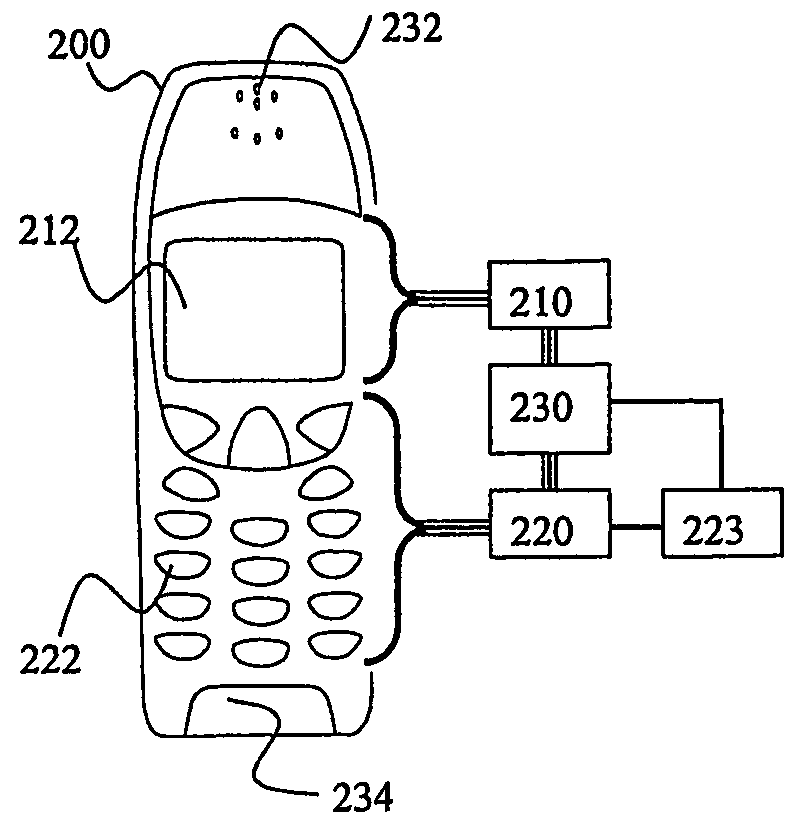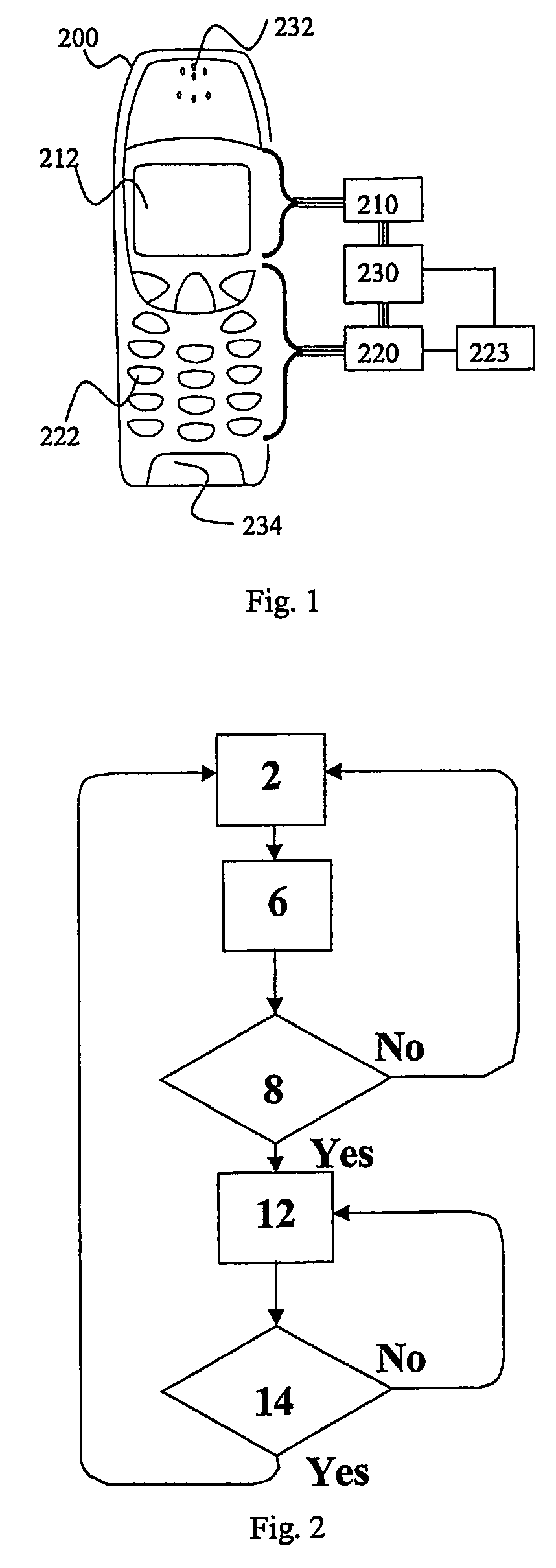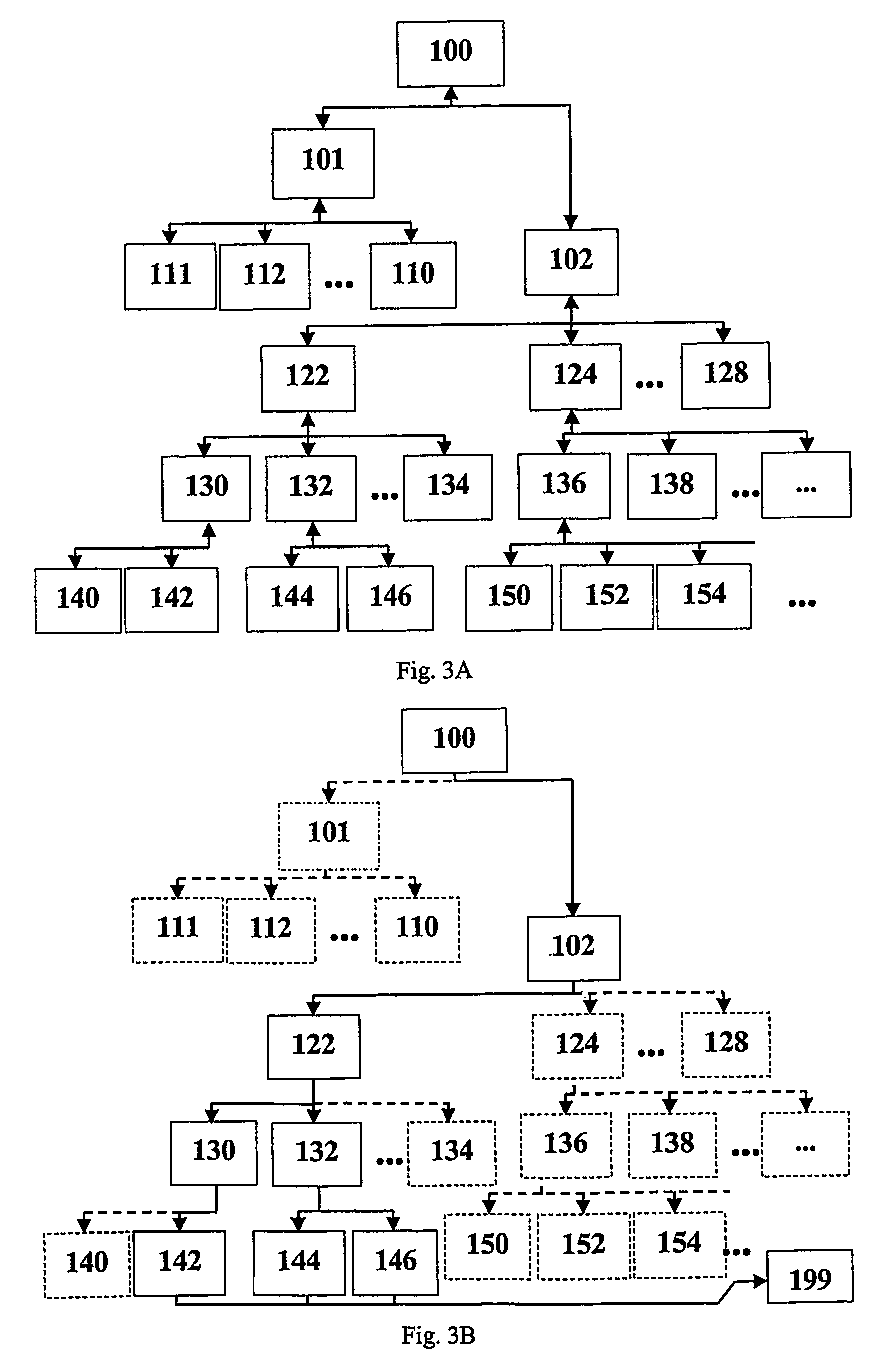Method for intermediate unlocking of a keypad on a mobile electronic device
a mobile electronic device and keypad technology, applied in the direction of coding, pulse technique, instruments, etc., can solve the problems of not being able to overcome the problems of above mentioned electronic communication devices, hampering the use of the terminal for quick operations, and not being able to meet the needs of mobile terminal devices or handheld computers. to achieve the effect of faster operation
- Summary
- Abstract
- Description
- Claims
- Application Information
AI Technical Summary
Benefits of technology
Problems solved by technology
Method used
Image
Examples
Embodiment Construction
[0046]FIG. 1 is block diagram depicting a mobile telephone 200 providing an intermediate unlocking feature according to one embodiment of the present invention. The mobile telephone 200 has a keypad 222, a display 212, a loudspeaker 232 and a microphone 234, like any usual mobile telephone, the keypad 222 is connected via the input or keypad controller 220 to a mobile or central processing unit MCU 230. The MCU 230 is connected via the display controller 210 to the display 212. The mobile telephone further comprises a memory 232, that is at least connected to the MCU 230, and that may be connected to the keypad controller 220. The MCU is further connected (not shown) to other telephone elements (not shown) such as e.g. baseband processing means, transmitters, receivers, antennas and the like. The connection between the keypad controller and the central processing unit is bi-directional.
[0047]The keypad controller 220 pre-processes input from the keypad 222 before transferring it to ...
PUM
 Login to View More
Login to View More Abstract
Description
Claims
Application Information
 Login to View More
Login to View More - R&D
- Intellectual Property
- Life Sciences
- Materials
- Tech Scout
- Unparalleled Data Quality
- Higher Quality Content
- 60% Fewer Hallucinations
Browse by: Latest US Patents, China's latest patents, Technical Efficacy Thesaurus, Application Domain, Technology Topic, Popular Technical Reports.
© 2025 PatSnap. All rights reserved.Legal|Privacy policy|Modern Slavery Act Transparency Statement|Sitemap|About US| Contact US: help@patsnap.com



